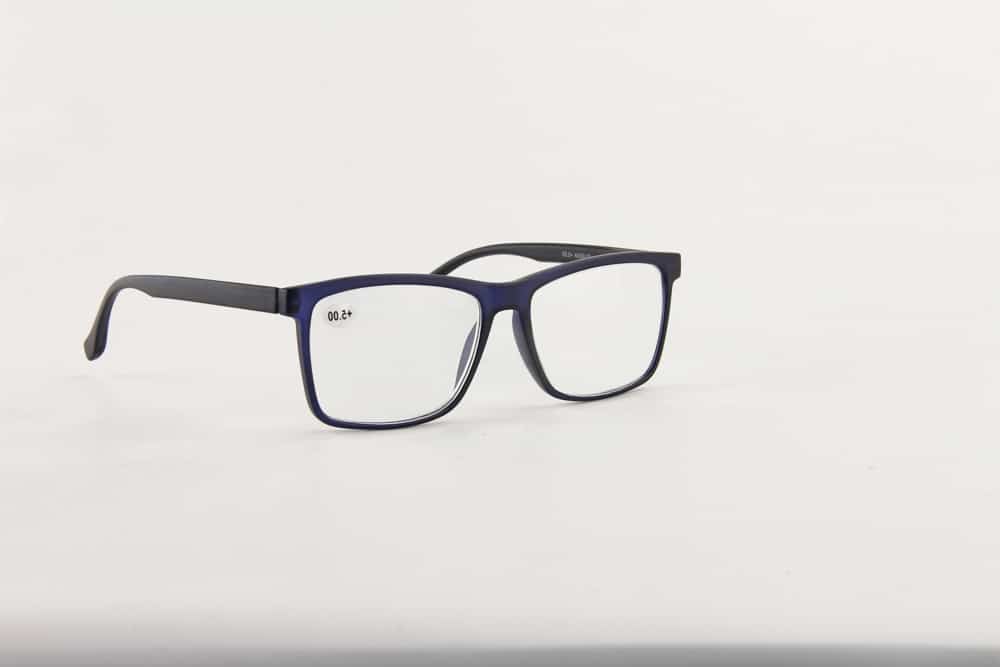China offers a plethora of opportunities as a leading manufacturer and exporter of eyewear products If you’re in the eyewear business and you want to import Chinese reading glasses. You can follow this guide, it will step-by-step show how to import wholesale reading glasses from China successfully. From finding suppliers to handling customs clearance, we’ve got you covered. Let’s dive in!
Why Import Reading Glasses from China
Importing reading glasses wholesale from China can be a strategic decision for several reasons:
- Cost-Effectiveness: China has a well-established manufacturing industry and economies of scale, which often results in lower production costs. As a result, reading glasses produced in China are generally more affordable compared to those manufactured in other countries.
- Diverse Product Range: China offers a wide range of reading glasses options in terms of styles, materials, and designs. Whether you need basic, budget-friendly reading glasses or high-quality, fashionable ones, China can cater to various customer preferences.
- Manufacturing Expertise: Chinese manufacturers have extensive experience in producing eyewear, including reading glasses. They possess the necessary technology and expertise to manufacture high-quality products that meet international standards.
- Large Production Capacity: China’s manufacturing capabilities allow for mass production of reading glasses. This is particularly beneficial for businesses looking to order large quantities of products at competitive prices.
- Customization Options: Many Chinese manufacturers offer customization services, allowing businesses to create reading glasses with specific designs, colors, and branding, catering to their unique needs and target markets.
- Established Supply Chains: China has well-developed logistics and supply chain networks, making it easier to import products efficiently and cost-effectively to various parts of the world.
- Trade Agreements and Incentives: Some countries may have trade agreements or incentives with China that make importing goods more favorable, reducing import duties and taxes.
Types of Reader Glasses Made in China
China manufacturers supply a wide variety of reader glasses including:
- Full-frame Reading Glasses: These are standard reading glasses with lenses that have the same magnification power across the entire lens. They are suitable for individuals who spend significant time on close-up tasks like reading or using digital devices.
- Half-frame Reading Glasses: Half-frame reading glasses have lenses with magnification power for close-up work, while the lower half of the lens is without magnification. This design allows users to look over the glasses for distant viewing without the need to remove them.
- Bifocal Reading Glasses: Bifocal reading glasses have two distinct sections in the lenses. The upper portion is for distance vision, while the lower portion is for close-up tasks. They are beneficial for individuals who require both distance and near vision correction.
- Progressive Reading Glasses: Also known as no-line bifocals, progressive reading glasses offer a gradual transition of magnification from the top (for distance vision) to the bottom (for close-up tasks). They eliminate the visible lines found in bifocals, providing a more natural look.
- Folding Reading Glasses: These reading glasses feature a folding mechanism that allows them to be compact and easily carried in a pocket or a small case. They are convenient for people who are on the go and may need reading glasses intermittently.
- Computer Reading Glasses: These glasses are designed specifically for extended computer use, reducing eye strain caused by prolonged screen time. They usually have an anti-reflective coating to minimize glare and blue light filtering technology.
- Reading Sunglasses: Reading sunglasses combine the functionality of reading glasses with the UV protection of sunglasses. They are ideal for reading outdoors in bright sunlight.
- Designer Reading Glasses: China produces a variety of stylish and fashionable reading glasses that cater to individuals looking for trendy eyewear while also addressing their vision needs.
- Blue Light Blocking Glasses: With the increasing use of digital devices, China manufactures reading glasses with blue light filtering technology to reduce eye strain and potential damage caused by exposure to blue light.
- Rimless Reading Glasses: These reading glasses have lenses attached to the temples directly without a frame around the lenses. They provide a minimalistic and lightweight design.
It’s essential to consider factors like lens material, frame material, magnification power, and style when choosing reading glasses that suit your needs. Additionally, seeking professional advice from an optometrist can ensure that you get the correct prescription and the most suitable type of reading glasses for your vision requirements.
Where to Find the Glasses to Import from China
Certainly! Here are more details on each method for finding reading glasses to import from China:
- Online B2B Platforms: Websites like Alibaba, Global Sources, and Made-in-China have extensive listings of suppliers and manufacturers offering reading glasses. You can browse through product catalogs, compare prices, and communicate directly with potential suppliers.
- Trade Shows and Exhibitions: Attend eyewear trade shows and exhibitions held in China, such as the Canton Fair and Hong Kong Optical Fair. These events bring together numerous suppliers and manufacturers under one roof, providing an excellent opportunity to meet them in person, examine product samples, and establish business relationships.
- Industry Directories: Explore eyewear industry directories that specifically list manufacturers and suppliers of reading glasses from China. These directories often provide comprehensive contact information and other details about the companies, making it easier to initiate inquiries.
- Business Networks and Associations: Join online forums and networks related to the eyewear industry. Engaging with professionals in the field can lead to valuable recommendations and insights on reputable suppliers in China.
- Local Agents and Sourcing Companies: Consider working with local agents or sourcing companies based in China. These entities possess in-depth knowledge of the market and can assist in finding reliable suppliers, negotiating prices, and managing the production and shipping processes.
- Online Research and Directories: Conduct thorough online research to identify reputable reading glasses manufacturers and suppliers in China. Check their websites, certifications, and customer reviews to evaluate their credibility.
- Trade Consultancy Services: Some companies specialize in helping businesses with international trade and can aid in finding suitable reading glasses suppliers from Chin
How to Vet the Glasses Suppliers from China
Vetting reading glasses suppliers from China is essential to ensure that you partner with reputable and reliable manufacturers. Here are the steps you can follow to vet potential suppliers effectively:
- Background Research: Conduct thorough background research on the supplier. Check the basic informations about the company. Look for customer reviews and testimonials to gauge their reputation.
- Verify Business Licenses and Certifications: Ensure that the supplier holds valid business licenses and relevant certifications for producing and exporting reading glasses. This step helps to confirm their legitimacy and compliance with industry standards.
- Factory Inspection: If possible, visit the supplier’s manufacturing facility in China or hire a third-party inspection agency to conduct a factory audit.
- Product Samples: Request product samples of the reading glasses you intend to import. Check the quality, design, and materials to ensure they meet the standards. Compare samples from multiple suppliers to make an informed decision.
- Quality Assurance: Inquire about the supplier’s quality assurance procedures and standards. They should have measures in place to maintain consistent product quality and ensure defects are minimized.
- Communication and Responsiveness: Evaluate the supplier’s communication skills and responsiveness. A reliable supplier should be prompt in replying to inquiries and capable of effective communication in English or your preferred language.
- Customer References: Ask for references from their current or previous clients who have imported reading glasses. Reach out to these references to gather feedback about the supplier’s reliability, product quality, and service.
- Compliance with Regulations: Ensure that the supplier complies with all relevant import and export regulations, including customs requirements, safety standards, and labeling regulations in your country.
- Pricing and Payment Terms: Compare pricing from multiple suppliers to ensure competitive rates. Discuss payment terms and conditions to avoid any financial risks.
- Contracts and Agreements: Draft a detailed contract or agreement that outlines all terms and conditions, including product specifications, quality standards, delivery timelines, payment terms, and dispute resolution mechanisms.
- Intellectual Property Protection: If you have proprietary designs or branding, discuss intellectual property protection with the supplier to prevent any unauthorized use or replication.
- Scams and Fraud Awareness: Be vigilant about potential scams and fraud when dealing with new suppliers. Verify the authenticity of the company and be cautious of any suspicious requests or deals that seem too good to be true.
By following these steps and conducting due diligence, you can identify trustworthy reading glasses suppliers from China and establish a successful and reliable business partnership.
Using a Sourcing Agent to Find Reading Glasses for Importing from China
- Unveiling the Supplier: Sourcing agents, well-versed in the intricacies of the Chinese market, undertake exhaustive research to discern commendable manufacturers and suppliers of reading glasses.
- Validation and Scrutiny: These adept sourcing agents ascertain the credibility and authenticity of potential suppliers through meticulous examination of business licenses, certifications, and comprehensive background checks, ensuring that you forge alliances with dependable manufacturers.
- The Art of Negotiation: Armed with impeccable negotiation skills, sourcing agents adeptly secure competitive pricing and favorable terms with the suppliers, leveraging their profound comprehension of local business customs and adroitly navigating through language and cultural barriers.
- Championing Quality Control: The prying eyes of sourcing agents meticulously oversee the entire production process, conducting scrupulous quality inspections to guarantee that the reading glasses impeccably align with your exacting standards and specifications.
- Fostering Communication: These skilled intermediaries facilitate seamless communication between you and the suppliers, adroitly translating documents, elucidating product requirements, and adeptly resolving any quandaries that might surface during the importation process.
- Navigating Logistics and Shipping: Sourcing agents adroitly assist in arranging logistics and shipping, ensuring swift and cost-effective delivery of the reading glasses to your desired destination.
- Masters of Industry Knowledge: A reputable sourcing agent, specializing in the realm of eyewear, proffers invaluable insights into the latest trends, materials, and designs permeating the reading glasses market, thereby empowering you to make erudite decisions.
- Mitigating Risks: Sourcing agents, seasoned in the realm of international trade, adeptly mitigate risks entailing dealings with unreliable suppliers or confronting legal and regulatory conundrums.
- Championing Customization: In the event that you seek personalized reading glasses exuding specific designs or branding, a sourcing agent proficiently facilitates harmonious collaboration with the suppliers.
Requirements for Importing Reading Glasses from China
The specific requirements may vary depending on your country’s regulations and the type of reading glasses you are importing, but some common requirements include:
- Product Compliance: Ensure that the reading glasses meet the safety and quality standards of your country. They should comply with relevant product regulations, such as optical standards and impact resistance requirements.
- Documentation: Obtain all necessary documentation, including invoices, packing lists, certificates of origin, and product specifications. These documents will be required for customs clearance and to verify product authenticity.
- Import Licenses and Permits: Check if your country requires import licenses or permits for importing reading glasses. Some countries have specific regulations for importing eyewear products.
- Customs Duties and Taxes: Be aware of the applicable customs duties, taxes, and import tariffs for reading glasses in your country. These charges can significantly impact the total cost of importing.
- Product Labeling and Marking: Ensure that the reading glasses are properly labeled and marked according to your country’s regulations. This may include information about the manufacturer, material composition, magnification power, and other relevant details.
- Packaging Requirements: Verify if there are any specific packaging requirements for reading glasses during transit and storage. Adequate packaging helps protect the products and ensures they arrive in good condition.
- Testing and Certification: If required by your country’s regulations, ensure that the reading glasses have undergone relevant testing and hold appropriate certifications, such as CE marking for the European market.
- Intellectual Property Rights: Ensure that the reading glasses you are importing do not infringe on any intellectual property rights, such as trademarks or patents.
- Shipping and Logistics: Choose a reliable shipping method and freight forwarder to transport the reading glasses from China to your destination. Consider factors like shipping time, cost, and trackability.
- Payment Terms and Contracts: Establish clear payment terms with the supplier and draft a detailed contract that outlines all the terms and conditions of the import arrangement.
- Product Sample Evaluation: Before placing a bulk order, request product samples to evaluate the quality, design, and specifications of the reading glasses.
Minimum Order Quantity (MOQ) Requirements for Reading Glasses from China
Minimum Order Quantity (MOQ) requirements for reading glasses from China can vary depending on the supplier, the type of reading glasses, and other factors. MOQ refers to the minimum quantity of products that a supplier is willing to produce or sell for a single order. Here are some common points to consider regarding MOQ for reading glasses:
- Factory and Supplier Size: Larger factories and suppliers in China typically have higher MOQs because they are set up for mass production. Smaller factories or manufacturers may offer lower MOQs to attract small-scale buyers.
- Type of Reading Glasses: The complexity and customization level of the reading glasses can affect the MOQ. Basic, standard reading glasses may have lower MOQs compared to custom-designed or specialized reading glasses.
- Materials and Components: If the reading glasses require specific materials or components that are not readily available or require special ordering, the MOQ may be higher to justify the production cost.
- Economies of Scale: Suppliers may offer lower per-unit prices for larger orders to encourage buyers to place higher MOQs. This is because larger orders are more cost-effective for the supplier to produce.
- Sample Orders: Some suppliers may allow smaller sample orders before committing to a larger MOQ. This allows buyers to assess product quality and suitability before making a larger purchase.
- Negotiation: MOQs are often negotiable, especially if you have a good relationship with the supplier or can offer other incentives, such as longer-term contracts or repeat orders.
- Seasonal Factors: During peak seasons or periods of high demand, suppliers may enforce higher MOQs to prioritize larger orders and manage production efficiently.
Factors Affecting the Cost of Importing Reading Glasses from China
The cost of importing reading glasses from China can be influenced by various factors. It’s essential to consider these factors to accurately estimate the total cost and make informed decisions. Here are some key factors that can affect the cost:
- Product Quality and Materials: The quality of the reading glasses and the materials used in their construction can significantly impact the cost. Higher-quality materials and advanced features may result in higher manufacturing costs and, consequently, a higher product price.
- Minimum Order Quantity (MOQ): As mentioned earlier, suppliers in China often have MOQ requirements. Ordering a larger quantity may lead to better per-unit pricing, reducing the overall cost per item.
- Customization and Branding: If you require custom designs or branding on the reading glasses, this may incur additional costs, such as mold fees or printing expenses.
- Logistics and Shipping: Shipping costs depend on various factors, including the volume, weight, and shipping method chosen. Air freight is typically faster but more expensive, while sea freight is more economical for larger shipments.
- Import Duties and Taxes: Be aware of the import duties, taxes, and tariffs applicable in your country. These charges can significantly impact the overall cost of importing the reading glasses.
- Packaging: Appropriate and protective packaging is crucial for ensuring the safe transit of reading glasses. Depending on the packaging used, there may be additional costs.
- Currency Exchange Rates: Fluctuations in exchange rates between your country’s currency and the Chinese Yuan (CNY) can affect the final cost of the imported goods.
- Supplier Reputation and Quality Assurance: Working with reputable suppliers may lead to higher prices, but it can provide assurance of better product quality and reliable business dealings.
- Payment Terms: Negotiating favorable payment terms with the supplier, such as a letter of credit or partial upfront payment, can impact your cash flow and overall cost.
- Regulatory Compliance: Ensuring that the reading glasses meet all safety and quality standards in your country may involve additional testing or certification costs.
- Seasonal Factors and Demand: During peak seasons or periods of high demand, suppliers may adjust their prices accordingly.
- Trade Agreements and Incentives: Some countries may have trade agreements with China that provide tariff reductions or exemptions, potentially lowering the overall cost of importing.
Negotiating Reading Glasses Prices with Chinese Suppliers
Negotiating reading glasses prices with Chinese suppliers is a common practice and an essential step in securing favorable terms for your import business. Here are some tips to help you effectively negotiate prices:
- Research and Compare: Conduct thorough research on the current market prices for reading glasses of similar quality and specifications. Compare prices from multiple suppliers to have a realistic understanding of the price range.
- Build a Relationship: Establish a good rapport with the supplier by demonstrating genuine interest in their products and understanding their business. Building a strong relationship can lead to more flexible negotiations.
- Bulk Orders and MOQs: Inquire about the possibility of reducing the per-unit price by increasing the order quantity. Suppliers are often willing to offer better prices for larger orders.
- Highlight Long-Term Potential: If you plan to have a long-term business relationship with the supplier, communicate your commitment to ongoing orders. Long-term partnerships may lead to more competitive pricing.
- Emphasize Unique Selling Points: If the reading glasses have unique features or designs, highlight them as selling points. Suppliers may be more willing to negotiate if they see value in the product.
- Request Sample Discounts: When requesting product samples, ask if the supplier can provide a discount or absorb the sample cost if you proceed with a bulk order.
- Negotiate Packaging Costs: Packaging can add to the overall price. Discuss options for cost-effective packaging without compromising product protection.
- Explore Different Payment Terms: Negotiate payment terms that align with your cash flow and reduce the financial burden. Consider options like partial upfront payment or deferred payment upon delivery.
- Competing Offers: If you have multiple suppliers in mind, let them know you are considering other offers. This may encourage them to offer more competitive pricing.
- Seeking Lower Production Costs: Inquire about ways to reduce production costs without compromising product quality, such as using alternative materials or production methods.
- Be Respectful and Professional: Maintain a respectful and professional tone throughout the negotiation process. Avoid aggressive or confrontational tactics, as they can strain the relationship.
- Be Willing to Compromise: Negotiations often involve give-and-take. Be open to compromise and find a mutually beneficial solution that works for both parties.
Remember that successful negotiations require effective communication and a willingness to find common ground. Be clear about your requirements and expectations, and be prepared to listen to the supplier’s perspective as well. By approaching negotiations with a positive attitude and a well-prepared strategy, you can increase the chances of securing favorable prices for your reading glasses import business.
How to Control Reading Glasses Quality from China
Here are some steps to effectively control the quality:
- Find Reliable Suppliers: Start by selecting reputable suppliers with a proven track record of producing high-quality reading glasses. Conduct background checks, read customer reviews, and consider supplier certifications.
- Establish Clear Quality Standards: Clearly communicate your quality requirements to the supplier. Provide detailed specifications, including materials, dimensions, magnification power, tolerances, and any specific features.
- Request Product Samples: Before placing a bulk order, request samples of the reading glasses. Evaluate the samples thoroughly to check for defects, design accuracy, and overall quality.
- Perform Factory Inspections: If possible, visit the supplier’s manufacturing facility in China or hire a third-party inspection agency to conduct a factory audit. Assess the production process, equipment, and quality control measures.
- Implement Pre-Production Inspections: Inspect the initial batch of reading glasses before mass production begins. This step allows you to address any issues or discrepancies at an early stage.
- Conduct In-Process Inspections: During production, perform random inspections to ensure that quality standards are being maintained throughout the manufacturing process.
- Perform Final Random Inspection: Once the production is complete, conduct a final random inspection on a random sample of the finished reading glasses. This inspection verifies that the products meet your specifications before shipping.
- Testing and Certification: Depending on your country’s regulations, consider conducting product testing for safety and quality assurance. Obtain necessary certifications, such as CE marking, if applicable.
- Quality Control Documentation: Maintain thorough documentation of all quality control activities, including inspection reports, test results, and communication with the supplier.
- Address Non-Conformities: If any quality issues are identified during inspections, work with the supplier to address and rectify them promptly. Ensure that corrective actions are taken to prevent recurrence.
- Continuous Improvement: Encourage the supplier to focus on continuous improvement in their manufacturing processes and quality control efforts.
- Feedback and Communication: Maintain open and clear communication with the supplier throughout the process. Provide feedback on the quality of the reading glasses and collaborate on solutions.
- Establish Quality Assurance Agreements: Consider drafting quality assurance agreements with the supplier, outlining the quality standards, inspection procedures, and consequences for non-compliance.
Shipping Reading Glasses from China
Here’s a guide to shipping reading glasses from China:
- Choose a Shipping Method: Select the most suitable shipping method based on factors like cost, speed, and the volume of your shipment. The two primary options are:
- Sea Freight: Economical for larger shipments but slower compared to air freight. Suitable for non-urgent orders.
- Air Freight: Faster but relatively more expensive. Ideal for smaller, time-sensitive shipments.
- Packaging: Ensure that the reading glasses are well-packaged to prevent damage during transit. Proper packaging will protect the products and maintain their quality.
- Shipping Documentation: Prepare all necessary shipping documentation, including the commercial invoice, packing list, bill of lading (for sea freight), and air waybill (for air freight). These documents are essential for customs clearance and tracking the shipment.
- Customs Clearance: Work with a licensed customs broker or freight forwarder to handle customs clearance in both China and your destination country. They will ensure that all import/export regulations are followed, and duties and taxes are paid.
- Incoterms: Agree on the Incoterms (International Commercial Terms) with the supplier. Incoterms define the responsibilities and costs between the buyer and the seller during shipping.
- Track and Trace: Use tracking services provided by the shipping company to monitor the shipment’s progress and delivery status.
- Shipping Insurance: Consider obtaining shipping insurance to protect the value of the reading glasses in case of loss, damage, or other unforeseen circumstances during transit.
- Consolidation and LCL vs. FCL: If you have multiple suppliers or smaller shipments, consider consolidating them into one larger shipment (LCL – Less than Container Load). Alternatively, for significant quantities, a full container load (FCL) may be more cost-effective.
- Lead Time: Be aware of the lead time for shipping, which includes production time, time for the products to reach the port, and the transit time to your destination.
- Port of Arrival and Delivery: Select the most suitable port of arrival in your country and arrange for the delivery of the shipment from the port to your warehouse or distribution center.
- Shipping Costs and Payment: Determine who will bear the shipping costs (buyer or seller) and establish clear payment terms with the supplier.
- Import Regulations: Familiarize yourself with your country’s import regulations for reading glasses. Ensure that the products comply with safety standards and labeling requirements.
Loading Ports When Importing Eyeglasses from China
China offers several seaports and airports that serve as vital gateways for importing sunglasses from the country. With over 34 main seaports and more than 2000 minor ports situated along major and minor rivers, China facilitates the smooth movement of goods within and outside its borders. Among the prominent seaports and airports used by importers to ship eyeglasses are:
Loading Ports When Importing Eyeglasses from China
Seaports:
- Dalian
- Yingkou
- Jinzhou
- Quinhuangdao
- Tianjin
- Yantai
- Weihai
- Qingdao
- Rizhao
- Lianyungang
- Nantong
- Zhenjiang
- Jiangyin
- Nanjing
- Shanghai
- Ningbo
However, the cost of port fees varies based on the number of sunglasses being imported and the destination country.
Airports:
- Beijing Capital International Airport
- Shenzhen Bao’an International Airport
- Guangzhou Baiyun International Airport
- Beijing Daxing International Airport
- Xiamen Gaoqi International Airport
- Haikou Meilan International Airport
- Nanjing Lukou International Airport
- Shanghai Pudong International Airport
- Hangzhou International Airport
- Chengdu Shuangliu International Airport
- Hong Kong International Airport
- Shanghai Hongqiao International Airport
- Zhengzhou Xinzheng International Airport
- Liuzhou Bailian Airport (LZH)
- Wenzhou Longwan International Airport
In addition to sea and air transport, China has developed an extensive railway network to facilitate bulk imports to various destination countries. High-speed electric trains operated by China State Railway Group Company, Limited play a crucial role in transporting goods over long distances. Railway transport in China encompasses different categories, including National railways, local railways, and designated railways. Some of the significant railway routes are:
- Beijing–Harbin Railway
- East Coast Corridor
- Beijing–Shanghai Railway
- Beijing–Kowloon Railway
- Beijing–Guangzhou Railway
- Datong–Zhanjiang Corridor
- Baotou–Liuzhou Corridor
- Lanzhou–Kunming Corridor
- Beijing–Tibet Northern Coal Transport Corridor
- Southern Coal Transport Corridor
- Trans-Eurasia Corridor
- Nanjing–Xi’an Railway
- Yangtze River Corridor
- Shanghai–Kunming Railway
- Southwest Coastal Access Corridor
These comprehensive transportation options allow China to efficiently export Sunglasses and other goods to international markets, fostering trade and economic growth.
Procedure for Importing Reading Glasses from China
- Research and find reliable suppliers in China.
- Verify supplier credentials and request product samples.
- Negotiate pricing, terms, and product specifications.
- Ensure quality control through inspections.
- Obtain necessary certifications and comply with import regulations.
- Arrange shipping and customs clearance.
- Receive and inspect the shipment.
- Distribute and market the reading glasses.
By following these steps, you can successfully import reading glasses from China.
How to Reduce the Cost of Importing Reading Glasses from China
Here are some strategies to achieve cost savings:
- Bulk Ordering: Negotiate with suppliers for a larger order quantity (MOQ) to get better per-unit pricing. Buying in bulk can help reduce the cost per item.
- Consolidated Shipments: Combine multiple smaller orders into a single larger shipment to benefit from economies of scale and lower shipping costs.
- Optimize Shipping Method: Choose the most cost-effective shipping method based on the size, weight, and urgency of your shipment. Sea freight is generally more economical for larger quantities, while air freight may be faster for smaller, time-sensitive orders.
- Negotiate with Suppliers: Negotiate pricing and terms with suppliers to get the best deal. Be open to exploring various aspects like payment terms, packaging, and customization fees.
- Product Standardization: Reduce costs by standardizing the design and specifications of the reading glasses. Customization can add expenses, so sticking to standardized products can be more budget-friendly.
- Source from Low-Cost Regions: Consider sourcing from regions in China with lower production costs or where reading glasses are more competitively priced.
- Optimize Packaging: Work with suppliers to optimize packaging without compromising product protection. Efficient packaging can help reduce shipping costs.
- Minimize Customs Duties and Taxes: Research and utilize any available trade agreements or tariff exemptions to minimize import duties and taxes.
- Work with Efficient Freight Forwarders: Collaborate with experienced and efficient freight forwarders who can negotiate better shipping rates and handle customs clearance efficiently.
- Avoid Unnecessary Costs: Scrutinize all additional costs, such as unnecessary add-ons or services, and try to minimize them.
- Quality Control: While cost reduction is crucial, maintaining product quality is equally important. Avoid compromising on quality as it may lead to additional expenses in the long run.
- Build Long-Term Relationships: Establish strong and long-term relationships with reliable suppliers. Long-term partnerships can often lead to better pricing and improved cooperation.
- Monitor Currency Exchange Rates: Keep an eye on currency exchange rates and consider making purchases when the rates are more favorable.
Best Time to Import Reading Glasses from China
The best time to import reading glasses from China depends on several factors, including your business needs, market demand, and global economic conditions. However, there are some general considerations to keep in mind:
- Trade Shows and Exhibitions: Consider importing reading glasses after attending trade shows and exhibitions in China, such as the Canton Fair or Hong Kong Optical Fair. These events provide an opportunity to meet suppliers, explore new products, and negotiate deals.
- Peak Production Season: Be mindful of peak production seasons in China, which might affect lead times and availability. Avoid placing orders during major Chinese holidays like Chinese New Year when many businesses temporarily shut down.
- Market Demand: Analyze market demand for reading glasses in your country. Consider importing when demand is high, such as before the holiday season or back-to-school periods.
- Currency Exchange Rates: Monitor currency exchange rates between your country’s currency and the Chinese Yuan (CNY). Importing when the exchange rate is favorable can help you get better pricing.
- Supply Chain Efficiency: Assess the efficiency of your supply chain and logistics partners. Plan imports during periods when your supply chain is better equipped to handle shipments and customs clearance.
- New Product Releases: Keep track of new product releases and trends in the reading glasses market. Importing the latest designs and styles can give your business a competitive edge.
- Budget and Cash Flow: Consider your budget and cash flow situation. Importing when you have sufficient funds available can help avoid financial strains.
- Lead Time and Production Schedule: Factor in the lead time for production and shipping. Plan imports well in advance to ensure timely availability of reading glasses.
- Seasonal Sales Cycles: If you operate a retail business, consider importing reading glasses ahead of peak sales seasons to have sufficient stock on hand.
How to Clear Reading Glasses from China?
Clearing sunglasses from China involves the following steps:
- Contact a Clearing Agent: To facilitate the clearance process, you can get in touch with a clearing agent who will assist you with the necessary procedures.
- Custom Declaration: The clearing agent will make a customs declaration entry in compliance with the applicable tax regulations.
- In-House Clearance Services: Some companies offer in-house clearance services, and you can reach out to them for assistance as well.
- Original Importation File: Present the original importation file of the sunglasses to the customs authority for verification.
- Clearance at Point of Entry: In certain cases, sunglasses may be cleared at the point of entry by signing the relevant clearance form, demonstrating compliance with legal requirements.
- Verification and Release: After thorough verification, the sunglasses are cleared for release.
Conclusion
Importing reading glasses from China can be a lucrative venture, but it requires careful planning, research, and cooperation with reliable suppliers. By following this comprehensive guide, you’ll be better equipped to navigate the complexities of international trade and build a successful business.
FAQs
- Is it safe to import reading glasses from China?
Importing from China can be safe if you thoroughly vet suppliers and ensure product quality. - Are there any import restrictions on reading glasses?
Import restrictions vary by country, so it’s essential to research and comply with your nation’s regulations. - How can I find the best suppliers for my reading glasses business?
Consider attending trade shows, using online marketplaces, or hiring a sourcing agent to find reputable suppliers. - What are some common challenges when importing reading glasses from China?
Challenges may include language barriers, cultural differences, and quality control issues. Working closely with suppliers can help overcome these challenges. - Can I get samples before placing a bulk order?
Yes, it’s advisable to request samples to assess product quality and suitability for your market.
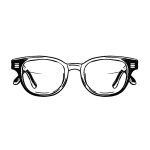 Reading Glasses
Reading Glasses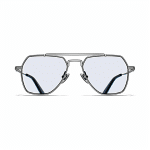 Sunglasses
Sunglasses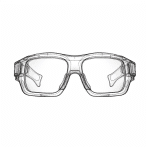 Safety Glasses
Safety Glasses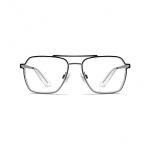 Optical Glasses
Optical Glasses Accessories
Accessories